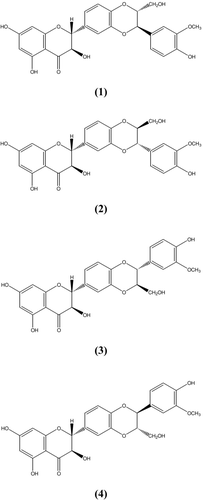Figures & data
Table 1. HPLC gradient solvent program.
Figure 2. Growth of callus of Silybum marianum from leaf (□), shoot (▪) and root (▵) segments on MS media. Data are the averages of three experiments in triplicate (means ± S.E.).
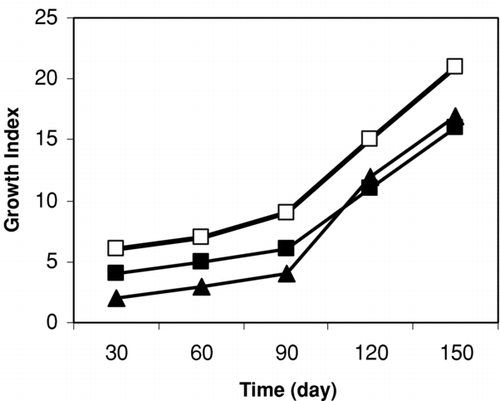
Figure 3. Effect of different treatments on flavonolignan (%) accumulation in calli culture culture of S. marianum. Treatments refer to: Pic (1, 2 or 3 mg l−1), Kin (A) (0.4, 0.8 or 1.5 mg l−1) and: BAP (B) (0.4, 0.8 or 1.5 mg l−1) after 60 (□) and 90 (▪) days. Data are the averages of three experiments; in triplicate (means ± S.E.).
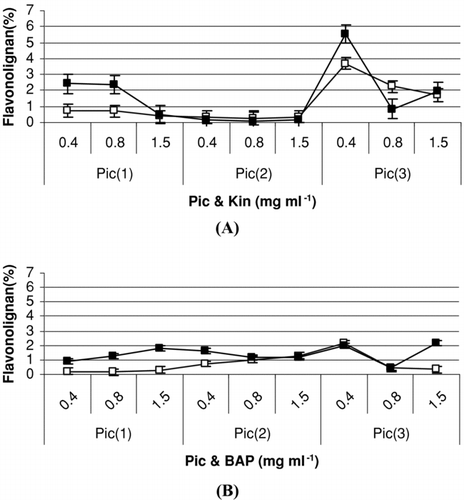
Figure 4. Chromatogram of methanolic extract from callus cultures of S. marianum on MS media supplemented with 3 mg l−1 picloram and 0.4 mg l−1 kinetin.

Figure 5. Effect of different treatments on biomass accumulation (A) and flavonolignan content (%) (B) in cell suspension culture of S. marianum on day 28 under light and dark conditions. Treatments refer to: 1: Pic (3 mg l−1); 2: Pic (3 mg l−1) and JA (2 mg l−1); 3: Pic (2 mg l−1); 4; Pic (2 mg l−1) and JA (2 mg l−1). Data are the averages of three experiments in triplicate (means ± .S.E.).
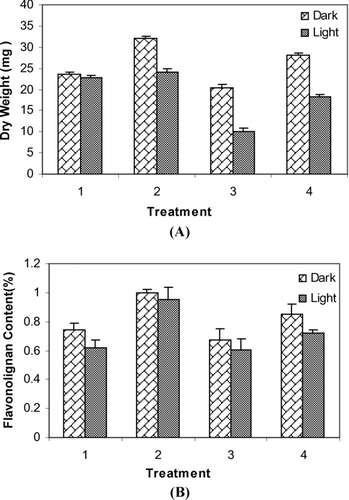
Figure 6. Influence of different treatments on the number of cells in suspension culture of S. marianum on days 7, 14, 21 and 28 under light and dark conditions. Treatments refer to: ▵: Pic (3 mg l−1); ▵: Pic (3 mg l−1) and JA (2 mg l−1); ▪: Pic (2 mg l−1); □: Pic (2 mg l−1) and JA (2 mg l−1). Data are the averages of three experiments in triplicate (means ± S.E.).
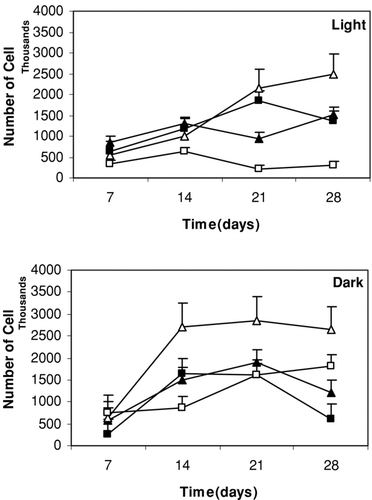
Table 2. Flavonolignan content in cell suspension culture of Silybum marianum grown in media supplemented with 3 mg l− 1 Pic and 2 mg l l− 1 JA in dark conditions. Component were determined and quantified by by HPLC analysis. (Taxifolin, TXF; Silychristin, SCN; Silydianin, SDN; Silybin, SBN; Isosilybin, ISBN and Silymarin (SLM)). Data are the averages of three experiments in triplicate (means± S.E.).
